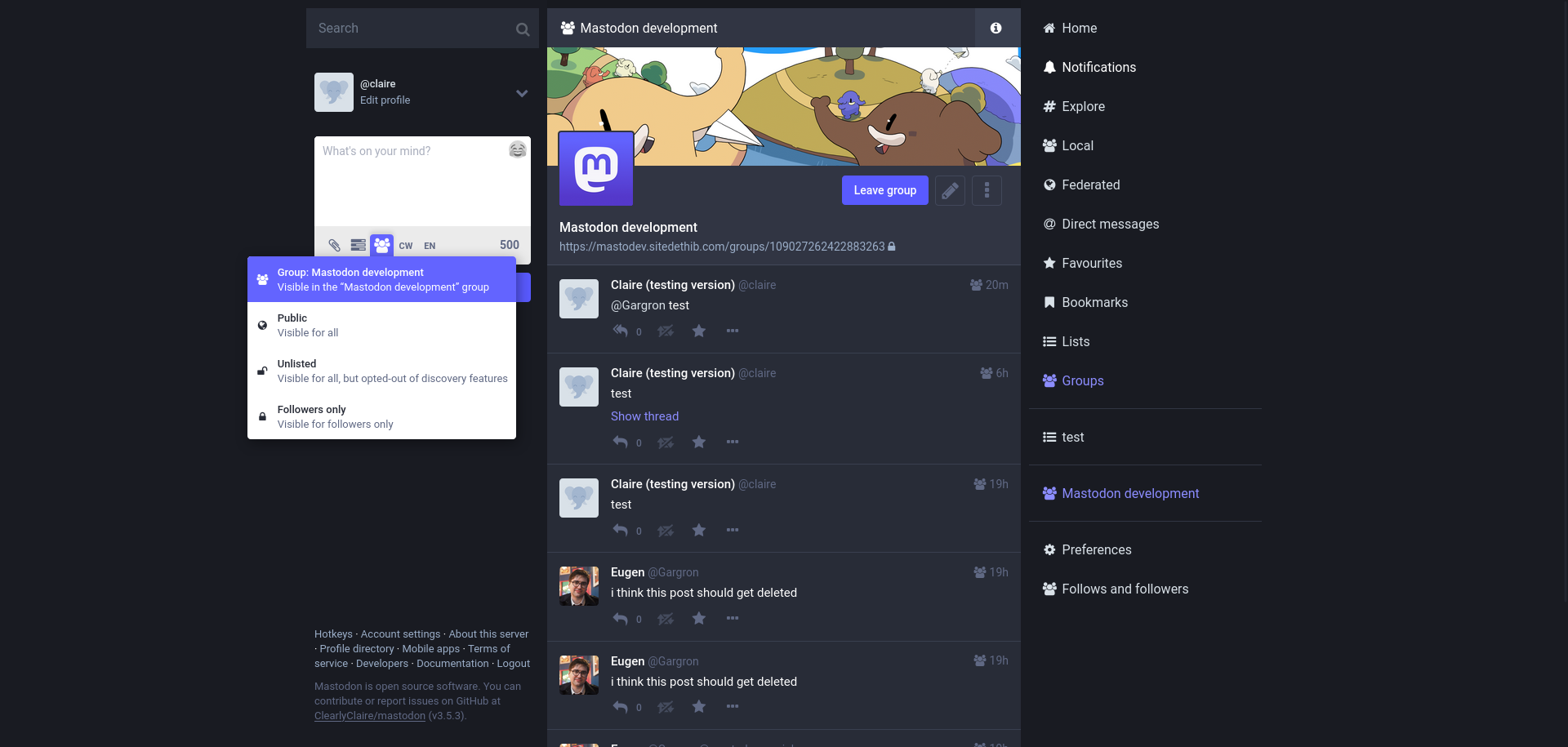Groups in the #fediverse
Mastodon recently released a roadmap for the future development. One of the items on the list is simply titled ‘Groups’.

There is no further explanation or context for the items on roadmap, which makes it quite unclear what this new feature might actually mean. In this piece we’ll look at:
🛣️What is currently in development for Mastodon
🛠️How GNU Social and QoTo have approached groups
🐟How Guppe and Chirp.social have build a groups feature on top of Mastodon
If you enjoy this content, subscribe directly or via my Mastodon account. Thanks!
🛣️Current development for Mastodon
In 2017, main developer Eugen Rochko commented that groups might be added to Mastodon, but that it wouldn’t be a high priority. It took for Mastodon’s 2021 annual report for groups to show up again, this time as a goal for 2022.

Over the summer of 2022, Mastodon developer Claire created a new pull request (a way to add changes, such as a new feature, to the main code of the project) for groups, which show some early screenshots of how groups will look:

The main expectations of groups on mastodon are also listed. It amounts to that groups will live outside your timeline, have moderators/administrators, and only members can post. It will have the main expected privacy and moderation policies, such as private posting, moderator tools, and join by approval.
The latest addition of code for groups dates from October 2022, and the timeline for 2022 has not been reached. However, the Mastodon organization has grown and changed significantly in the fall; increased funding and interest lead to multiple new job vacancies. It will be interesting to see if the groups feature will change, and when it will be shipped, with the extra engineers and designer.
🛠️How GNU Social and Qoto have approached groups
GNU Social and Qoto are two other microblogging platforms, similar to Mastodon, that communicate with the fediverse. Both feature their own implementation of groups, which can help form an understanding of how groups might work with Mastodon.
GNU Social has a public directory of groups that you can join:
After you join a group, you can add a message to the group by tagging it with “!groupname” in the message. Everyone can see all the messages that are tagged when they look for the specific group. It misses quite a few features that Mastodon promises, such as truly private groups, and the ability for comments to stay out of your main timeline, and only exist on the private timeline. It does however have an administrator, and selective joining of groups.
Qoto has very similar features as GNU social when it comes to groups, but the feature is not actively being used anymore, as it never really caught on.
🐟How Guppe and chirp.social have build a groups feature on top of Mastodon
Guppe takes a different approach to groups, by building the feature on top of Mastodon. Groups are created automatically, and not owned by anyone. Instead, you join a group via the website a.gup.pe. Then, you post via your fediverse client of choice (Mastodon, Akkoma, etc), and tag the group in the message. The group will then automattically boost your message.
This is how it looks like for the biggest guppe group, @bookstodon@a.gup.pe">Bookstodon

By following the group in your own client, you can then see all the messages for this group.
Aguppe differs in some significant ways from the other group proposals. The main issue is that there is no moderation of oversight possible, making this a vector of abuse. While addressed in the FAQ, this is an issue that is known, but not with a current solution. The developer recently stated that they prefer not to work with ´authoritarian group management´, and wants to experiment with democratic moderation systems.
Chirp.social takes the idea of Aguppe, and then adds an owner/moderator to the group. You follow a group on your microblogging platform of choice via @groupname@chirp.social, and you post like normal, tagging the group in your message. The group account then boosts your post to all the followers of the group.

We’ve discussed the current ways to incorporate groups in the microblogging part of the fediverse, such as Mastodon. There are other parts of the fediverse that have a specific focus on groups. Most notably is Lemmy, a link-aggegrator comparable to Reddit, but decentralized and federated. We will talk about Lemmy another time to discuss how a fork of Lemmy, Hexbear, is trying to federate itself. This will be interesting from a technical perspectif, as well as from how the cultures from Lemmy and Hexbear will interact, if they will be both part of the same network.
That is all for now, thank you for reading, and see you next week! If you enjoyed this newsletter, do not forget to subscribe, either directly to this blog via @fediverse-report@write.as or by following my Mastodon account.